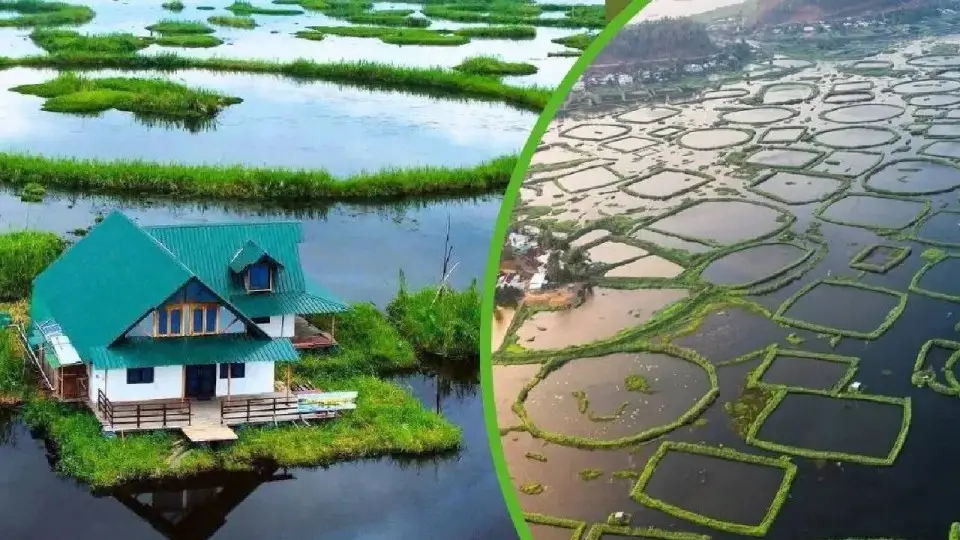
(Credit: OpenAI )
Lifestyle News: Champu Khangpok is known as India’s floating village, located on the calm waters of Loktak Lake in Manipur. The homes here are built on floating islands made of natural vegetation and organic matter. These islands, called phumdis, shift slowly with the movement of water and wind. Because of this, the location of houses and pathways in the village is never completely fixed. When a person stands here, the ground feels soft and slightly moving beneath the feet. It appears like the earth itself is breathing gently. This unusual experience makes the village different from every other place in the country.
The houses in this village are made mainly of bamboo and light wood so that they can float easily. These dwellings do not rest on hard ground but on thick, layered mats of plants and soil. The floating base is strong enough to hold people, furniture and daily activities. Families cook, eat, talk and sleep inside these gentle, swaying homes. Sometimes the houses move a little due to wind or waves, but the villagers are used to it. Life here flows slowly like the lake around it. Visitors often say the experience feels magical and peaceful.
Life in Champu Khangpok revolves around water. Boats are used the same way roads and scooters are used in cities. Children travel to school by small boats, and elders move across the lake for work or market needs. Most families depend on fishing for food and income. The villagers clean the lake water with natural methods and rely on solar panels for electricity. The rhythm of life is simple, connected closely with nature. There is no rush, no loud traffic, just water, sky and human life in quiet harmony.
The reason behind the floating village is the phumdis, which are thick layers of grass, weeds, roots and organic material. Over many years, these layers come together to form a stable, yet flexible platform. It looks like land but remains slightly soft and movable. The floating islands rise and fall with the water level of the lake. Because they are alive with plant roots, they keep growing and changing shape. Scientists recognize Loktak Lake as a special ecological zone for this reason. The lake supports many unique plants and animals that cannot survive elsewhere.
Around 500 houses and nearly 2,000 people live in Champu Khangpok. The villagers have a close community where everyone knows each other. Festivals and gatherings happen on floating ground just like in any other village. People celebrate, laugh, argue and live normal lives, even though their homes rest on moving soil. Children learn to row boats very young, and elders share stories of the lake’s history. The lifestyle may seem unusual to visitors, but for the villagers, it is natural and meaningful.
Champu Khangpok and Loktak Lake are recognized globally for their ecological and cultural importance. The area has been declared a wetland of international significance under the Ramsar Convention. Conservation groups and researchers visit the region to study the floating islands and the balance of life here. Efforts are made to protect the lake from pollution and excessive fishing, so that future generations can continue to live in harmony with the waters. The village stands as an example of how humans and nature can coexist respectfully.
To visit the floating village, travelers first need to reach Imphal, the capital of Manipur. From there, taxis or buses are available to reach Moirang or Thanga Lake point. After that, tourists take a boat ride across Loktak Lake to reach the village. The journey itself is calm and scenic, with wide waters and distant hills in view. Visiting this place can be a lifelong memory, especially for those who love nature and peaceful surroundings. It is not just a destination, but an experience of living with the rhythm of water.













Copyright © 2025 Top Indian News
